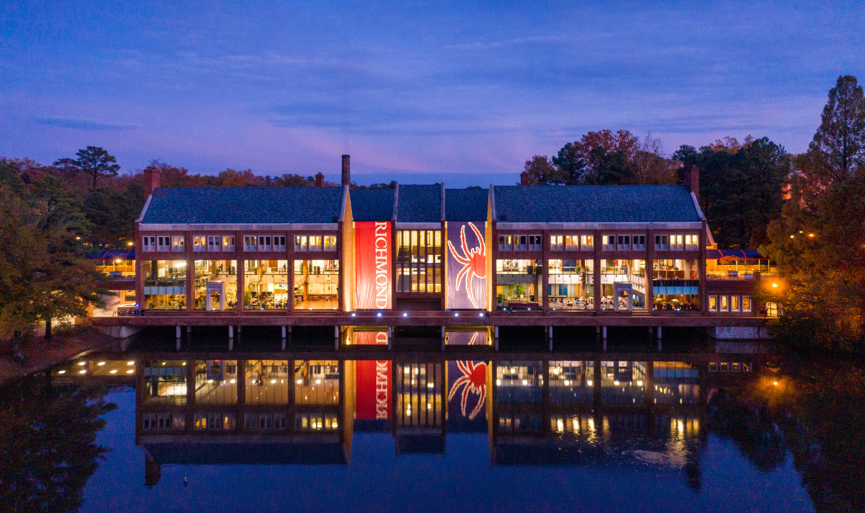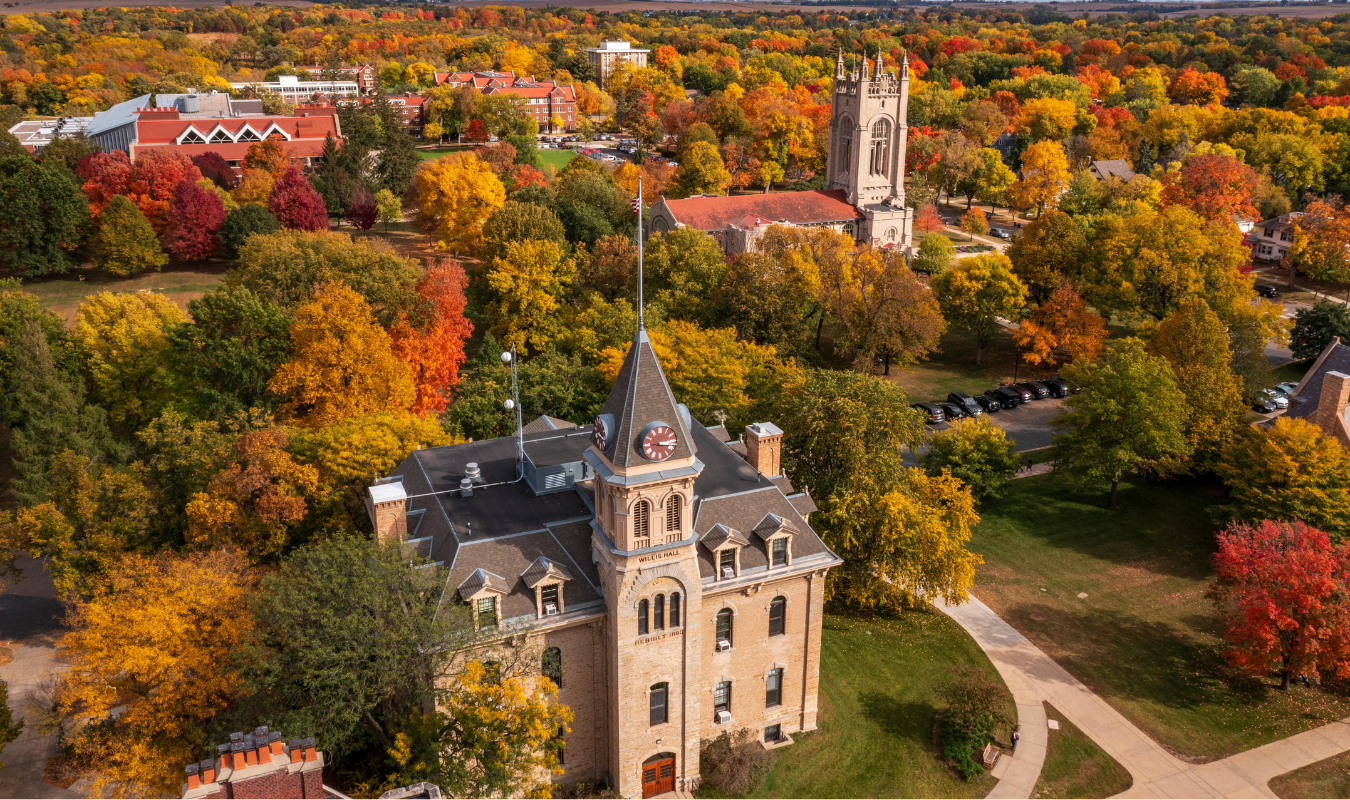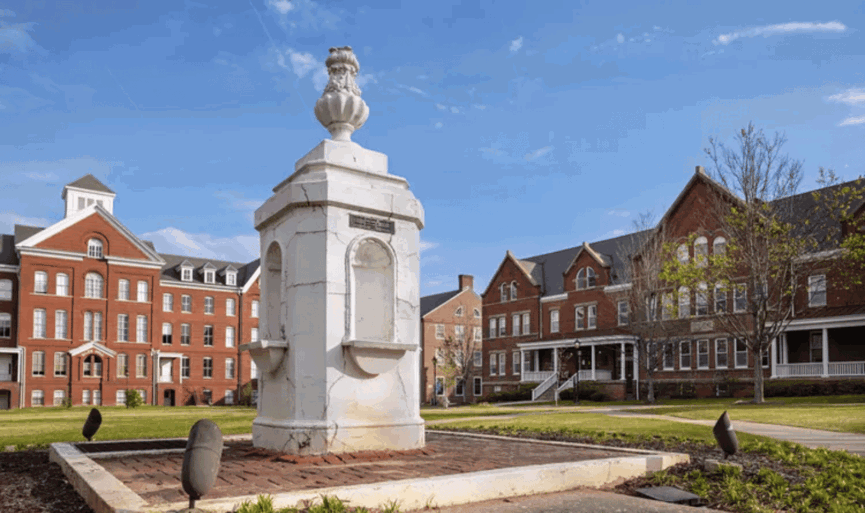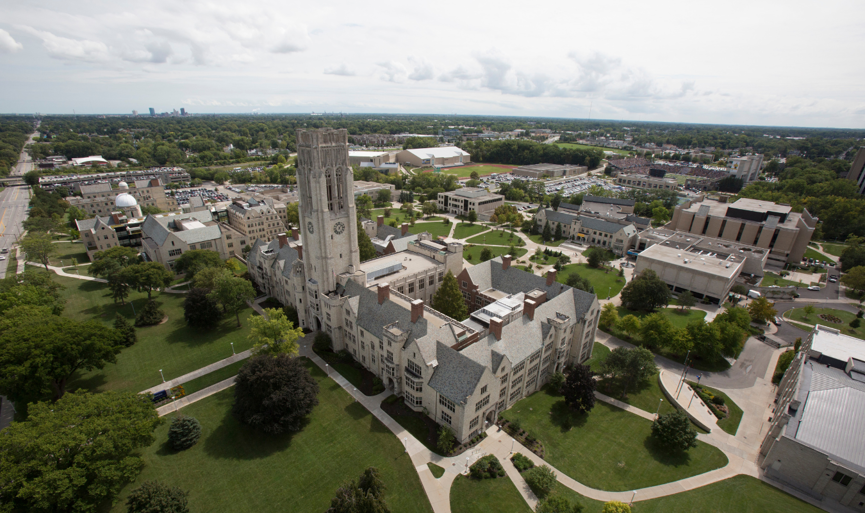STEP
1
Choosing a US university

Reputation and variety of US universities
There are more than 4,000 US universities offering undergraduate degrees, compared with around 120 universities in the UK.
Among top-tier American institutions, billions of dollars are invested into university research, average graduate salaries are high, and student to staff ratios are low. In world university league tables, hundreds of universities in the US rank comparably to or higher than UK universities.
Each college in the USA has freedom to set their own fees, processes and curriculum, which means each university can have a distinctive personality and approach to educating their students. These personalities or “flavours” means that there is a wide variety of experiences available to students. With such a wide range of universities and degrees on offer, you can find an institution that fits your academic and personal needs.
The flexibility of the liberal arts approach
Undergraduate degrees in the USA are more flexible than in the UK. You do not need to know which subject you want to study before you apply – most students are undecided.
US universities generally operate under a liberal arts philosophy. Students come in without a particular course of study in mind, and are expected to study a broad range of subjects during their first two years of a degree. This means you can explore different subjects, and try out new classes, before you have to pick your specialism. The idea is that you become more well-rounded and this foundation in interdisciplinary studies will help you both during your degree and after.
Towards the end of the second year of study, most students will declare a “major” – the specialism in which their degree will be in. By taking increasingly advanced subjects in that major, they will meet the requirements to graduate with a degree in that subject. You can even double major in two subjects, or minor in a subject you want to take a few classes in.
Due to that flexibility, here are some of the undergraduate degrees you might be able to pursue in the USA:
- Mathematics and Philosophy
- History with a minor in Economics
- Dance Anthropology and Human Biology
- Music and Business Studies
- Political Communication with a minor in French
Or you could design your own major, taking classes from several departments!
US universities aim to graduate well-rounded students, who can engage with the world in an interdisciplinary manner and with a broad skill set in both the arts and the sciences.
Funding for your studies
While the UK student loan cannot be used for a US university, many people are surprised to learn that UK students studying in the USA are often able to fund their studies through scholarships or financial aid from US universities and external funding bodies.
A significant proportion of international students in the USA report their American university as their primary source of funding.
Funding can be offered to students from universities or external funding bodies on the basis of:
- Merit
- Extracurricular achievement
- Financial need
- Talent
- Country of origin
- Subject of interest
- And more!
If you look hard enough, there are many scholarships available! Our guide to funding a US university degree will help you navigate your options.
Vibrant campus life and an amazing array of opportunities
US universities are known for their vibrant campus life, with many extracurricular opportunities available:
- Sports (varsity and intramural)
- Student government
- Journalism
- Performing arts
- Volunteering
- Hundreds of clubs and societies
US universities often put a lot of emphasis on the college experience and school spirit. The learning style in classrooms is often highly dynamic and there is more emphasis placed on practical application of theory than at a UK university. It’s not uncommon for students to undertake a short internship as part of a class, or to write a program as a final graded project for a computer science class, or to undertake a field trip.
This environment is embodied into time between classes on US campuses – students are often highly involved in campus life, and see their extracurricular activities and leadership as importantly as their studies.
With so many ways to get involved in American college life, you shouldn’t expect four years spent in the classroom and library.
Internationalise your CV
Employers are increasingly looking for graduates with international experience and broad skill sets.
International students in the USA can gain work experience through employment opportunities on campus and by completing internships during the holidays, sometimes for academic credit.
After graduating, you can apply for an Optional Practical Training (OPT) work permit. This allows you to work in the USA for up to one year after your US degree, or up to three years for STEM graduates.
Upon your return to the UK, you may find that your international study experience is particularly appealing to employers.

The University of Richmond is a private liberal arts college in Virginia with a top-ranked business school and boasts the country’s first undergraduate school of leadership studies. Richmond offers Spider Road Trips, providing students with the opportunity to visit major cities and learn firsthand about various industries while meeting with alumni to network, tour offices, and learn more about what professional life will be like after graduation.
Helpful things to remember about US study
- In the USA, “school”, “college” or “university” all mean the same thing – what we in the UK would call “university”. What we call “school” in the UK is known as high school in the USA!
- Students studying at undergraduate institutions in the US can come out with the same qualifications as a student at a UK university (BSc or BA) but these degrees take four years to gain, unlike three years in the UK.
- Some colleges, known as community colleges, offer an associates degree, which takes two years to achieve. While there is no equivalent of this degree in the UK, you can use it to transfer to a four-year US university and complete a further two years there to convert it into a bachelors degree.
Getting started with choosing a US university
With more than 4,000 colleges on offer, researching and then narrowing down your choices can be an exciting and surprising process.
As EducationUSA advisors, we see students being more successful when they spend time researching their university choices, rather than just jumping to applying to a university they have heard of. Putting the time and energy into this stage will pay off!
Many students find their perfect match at a university or location they’d not previously heard of. Students from the UK tend to apply to a relatively small group of universities which can hinder their chance of getting admitted, especially because some of the schools they are looking at have lower admission rates than Oxford or Cambridge in the UK! Applying to a broader range of schools can make a real difference between studying in the USA or not! As advisors, we would encourage anyone looking to apply to US universities to be open-minded, flexible, realistic and strategic (especially if you are looking for funding).
If you’re wondering how to get started, we’d suggest following three steps in your choosing process.
Step 1: Think about what’s important to you before your start searching
Everyone is different and each person will have a combination of different factors that will influence which university will be the best fit for them. US admissions at undergraduate level will be looking for students who will be the best fit for their university, and so spending time to get a clear sense of fit will help you identify the best institution for you. Some of the factors that might form part of your sense of fit could be:
Type of degree – A bachelor’s degree in the US lasts four years. Some degrees like engineering or the performing arts will have different requirements and application procedures.
You may wish to consider how the undergraduate curriculum is structured at a university. For example, some universities will have a core curriculum where all students will do the same thing in the first year, and which will not offer choices of classes (you’ll find this at a school like Columbia University). Others will have an open curriculum where students can pick any classes that interest them (Grinnell College or Brown University are good examples of this). Most universities are somewhere between these two styles, and ask students to take a certain number of classes in different disciplines, but students can pick from a long list of classes within those disciplines. Find out more about type of degrees further in the choosing guide.
Type of university – In the USA, there are over 4,000 undergraduate institutions and they all differ. There are several categories of institutions, each offering different degree types, experiences and expectations. Each US university will have different strengths, different styles of teaching and different personality. Find out more about types of universities in our guide.
Entry requirements and selectivity – Each university in the US will have different entry requirements and different levels of selectivity. Understanding your fit and competitiveness and how that matches the university you are researching will be important. Learn more here.
Funding your studies – Unlike in the UK, the cost of undergraduate study is not regulated by the government. US undergraduate fees and costs of living can vary widely from university to university. However, many US universities offer funding to help attract talented students to join their institution. If funding in the form of scholarships is something that’s important to you, you should plan for this as early as possible in your research and choosing process and check out our guide to funding US undergraduate study where we cover this extensively.
Personal fit - Every person will bring different perspectives and preference to this process. This part is about identifying what you want from a university (e.g. size, location, research focus and facilities, campus life and environment, housing, regional specialities, opportunities etc.) and the preferences we each need to have met. Find out more about personal fit in our guide.
If you know of someone who has studied in the USA (such as a friend, an alumnus of your university or your school or college adviser) it’s worth speaking with them about their experiences in the USA to help inform your thinking about the things that are important to you.
Academic fit –Each university will have different academic profile and admission requirements. It’s important to be realistic about your university choices in terms of what academic profile they are looking for. Choose a university that matches your academic fit.
Step 2: Do your research
Once you know what’s important to you, it’s time to do some research and put together a list of 10-20 universities that meet most or all of your criteria.
Top tip!
We’d recommend starting a spreadsheet to help you track your research – you could include columns for name of university, university fees, cost of living, funding offered for international students, important dates and links, key things that stood out to you during your research.
Using university search engines to find programmes
The following search tools let you discover a wide range of universities offering undergraduate degrees you might be interested in.
- Big Future College Search
- Forbes America’s Top Colleges
- Peterson’s
- Princeton Review
- US News and World Report Best Colleges
- VisitTheUSA (culture and travel information by state)
How do rankings fit into this process?
Some of these resources include university rankings, but rankings in the USA are not the same as in UK. Some don’t rate the quality of teaching or graduate prospects, and some give weight to how much money a university has or invite universities to peer rank themselves. Rankings can be useful tools, but shouldn’t be the only method you use to choose a university. Make sure you are using your list of factors that are important to you to identify your best fit programmes.
Watch our short video walking you through the steps of how to use a university search engine to find programmes.
Step 3: Narrow your choices
Once you have 10-20 universities that meet your criteria, you should narrow this list down to the ones to which you will apply to and which will be the best fit for you. Think strategically and spread your chances of admission.
We suggest you apply to 6-10 US universities in order to maximise your competitiveness and manage your workload.
Top strategy tips for narrowing your list:
Make sure you are a competitive fit for the university.
Be strategic and be aware of your own profile. Do you match the profile of the students admitted to the university? How do your academics and school test scores match up with the admitted students? How selective is the university? Are you being too narrow in your thinking and applying to only a few highly competitive universities?
Make sure you have done your research
Even if you are a good fit, selective universities will be looking for students who stand out in various ways and have thoroughly researched the university and will be looking this to be evidenced in your application. Applying “just because you have heard of the university” is the quickest way to a rejection.
If funding is important to you, check what universities offer funding to international students, if you’re eligible to apply for their funding and when you would need to apply. Check if your academic profile is higher than a university’s average profile, this will make you a very competitive applicant and you will stand a greater chance of gaining merit-based scholarships if they are available.
Do I need to visit a US campus before I apply?
You do not need to visit a US university before you apply. If you decide to visit, many universities will be open for self-guided tours throughout the year, and you can find more information about this on each university’s website.
There are many ways to learn more about a US university without making a physical visit:
- Spend time on the university’s webpage, check if virtual tours are available
- Meet the university at USA College Day in London
- Look at the news content produced by the university – this will give you a valuable insight into the priorities of the university
- Follow the university and its various communities on social media
- Attend any virtual information sessions offered by the university
- Ask the admissions office to put you in touch with an international or British student or alumnus
How do I figure out entry requirements and how selective the college is?
The US admissions process works differently to the UK process of applying to university.
Unlike UK universities, US universities do not have entry requirements or grade offers for admission. There will be no minimum grades you would have to achieve to apply.
Instead, US universities will look at your academic achievements to date (expressed by your GCSEs or Nat 5s or equivalent), your predicted grades at A Level (or IB or BTEC or T-Levels or Highers/Advanced Highers etc). They will also look at other parts of your application, including your extracurriculars, essays and research and understanding of the university.
Does this mean you will be competitive at any school? Not really. As a general rule, the more selective a school is, the higher the grades they will expect and the more impactful your extracurriculars will need to be. Many of the 150+ top universities in the USA will have lower rates of admission than the University of Cambridge in the UK.
If you are not sure if your grades would be competitive at a university you are considering, you can contact them and ask if you would make a competitive applicant.
What are the different types of undergraduate degrees at US universities?
- Bachelor’s degree – unlike in the UK, a US bachelor’s degree takes four years to complete. These degrees are more flexible than in the UK as you don’t need to know which subject you want to ‘major’ in before you apply. As part of the liberal arts philosophy, you are allowed to explore your academic interests by taking classes from a variety of subjects before focusing on your major.
- Associate’s degree – these degrees are offered at community colleges and take two years to complete. They often have a vocational focus and cost less to complete. Most community colleges in the US have a partnership with a US university, where you can transfer to after completing your associate degree and continue for an additional two years to receive your bachelors.
- Specialist degrees – Some US universities will offer specialist undergraduate degrees like engineering, performing arts or architecture. These degrees will have different requirements and application processes.
Can I study law at a US college?
The study of law and the path to being able to practice law works very differently in the USA. In the US, there are two types of law degrees, both of which are only studied at the postgraduate level. There are no undergraduate law programmes.
LLM
The Master of Laws (LLM) is usually a one-year degree, specialising in an area of law. It is open to students who already have a degree in law.
JD
The Doctor of Jurisprudence (JD) is the traditional route to legal qualification in the USA, preparing students to sit the Bar Exam for the state in which they wish to practise. It is typically a three-year professional programme, with little scholarly or research content. It is open only to students who have already completed an undergraduate degree.
There are a few reasons why the JD degree is not recommended for British students without permanent residency in the USA:
- It does not qualify you practise law in the UK
- There is little non-loaned JD funding available to international students
- In order to practise law in the US, you will still need to sit the Bar Exam for the state in which you wish to practise
- After you complete the JD and sit the Bar Exam, there is no guarantee of a job and/or visa sponsorship
- You then have a qualification not valid in the UK, with a potentially large student debt
Can I study medicine at a US college?
The US Doctor of Medicine (MD) is one of the most competitive programmes in the world. It is only studied at the postgraduate level, unlike in the UK, so American students entering these programmes will already have an undergraduate degree (normally in a subject like Biology). International students account for roughly 1.5% of all medical students in the USA.
Some medical schools do not accept applications from international students, whereas at other schools admission for international students will be incredibly competitive.
US applicants will often have completed:
- Competitive undergraduate pre-medicine degree programmes
- Extensive work experience and extracurricular activities
- High Medical College Admission Test (MCAT) scores
There are a few reasons why the MD is not recommended for British students without permanent residency in the USA:
- It does not necessarily qualify you to practise medicine in the UK
- There is little non-loaned MD funding for international students (it can cost over $250,000 to attend medical school in the USA)
- After you complete the MD, there is no guarantee of a job and/or visa sponsorship
For these reasons, we recommend to British students to study medicine in the UK and then apply for a postdoctoral fellowship or a PhD in an appropriate area of medicine in the USA. Medical schools will often have details of these online
Universities in the USA
US higher education is structured and organised differently to UK higher education. There are several different categories of US institutions, which will affect the style of your education, your experiences and your degree. With over 4,000+ universities to choose from, remember to look for ones that offer the degree you’re interested in and match your fit.
Private universities and colleges
These institutions receive the majority of their funding from fee-paying students, private donors and federal research grants. They usually have smaller student numbers, and the higher fees reflect this. However, private institutions can have generous funding opportunities available.
Public universities
Public universities receive funding from both the state and federal government. If you’re from Ohio, you will pay lower fees at a public university in Ohio than a student from California or the UK at that university.
Public universities often have lower fees than private institutions, even for out-of-state students. As an international student, you will be considered as an out-of-state applicant for all public universities. Many public universities offer merit-based scholarships to the best applicants, even if they are not from that state.
State universities can have large campuses and high student numbers. They can be centres of excellence for certain subjects and will often have many undergraduate degrees available.
Community Colleges
Community colleges offer two-year associate’s degree. They have lower fees and less rigorous admissions requirements than four-year universities.
Many community colleges have agreements with nearby four-year universities. After your associate’s degree you might be able to transfer to a university and complete a further two years to gain a bachelor’s degree.
This can be an affordable way of attending university in the USA. Some public university will consider you eligible for in-state tuition rate if you have attended a local community college.
Check out our webinar about community colleges:
Liberal arts colleges
Most universities in the USA share, to varying extents, the liberal arts philosophy of creating well-rounded students, who can engage with the world in an interdisciplinary manner and with a broad skill set in both the arts and the sciences.
Liberal arts colleges (or LACs) embrace this philosophy fully. They are usually small institutions, with student bodies ranging in size from a few hundred to a few thousand students, and a low student-to-faculty ratio. This often allows students to form tight-knit communities with their peers and closer relationships with faculty.
There are typically few or no postgraduate students so all research opportunities are given to undergraduates and classes are taught by professors, rather than graduate students, as may be the case for some classes at research institutions.
LACs also place a focus on teaching excellence and offer a wide variety of course structures - for example the block plan and flexible majors.
The extensive opportunities for undergraduate research mean that liberal arts colleges can be good preparation for graduate school, with a high proportion of LAC graduates going on to master's or PhD programmes, or to research jobs.
These institutions are often parts of consortiums - partnerships between a number of universities which allow students to take courses at partner institutions as part of their degree, thereby expanding the number of course options available.
Many are private but may offer extensive funding opportunities for admitted students.

Carleton College is a small, private liberal arts college in Minnesota where professors are consistently ranked the best in the nation for their commitment to undergraduate teaching. Carleton’s campus houses an 800-acre arboretum, where students in the environmental studies programme have their own wilderness field station and prairie restoration site.
Specialist institutions
Some universities focus their strengths in specific subject areas. Common examples include:
- Engineering, technology and computer science
- Performing arts
- Art and design

Maryland Institute College of Art is a specialist institution in Baltimore leading in art and design education. As a student at MICA you’ll take part in the First Year Experience, which offers a foundation-level exploratory art and design curriculum and gives you access to the Make Cool Stuff lab, complete with 3D printers, digital cutters and other various tech.
What is the Ivy League?
The Ivy League is a sports competition between eight of the oldest private universities in New England.
Many people in the UK use this term incorrectly, wrongly assuming that it is the synonymous with the Russell Group in the UK. Many universities people assume are in the Ivy League – such as MIT and Stanford – are not. It’s worth remembering that these schools may not be the best fit for you in terms of offering classes or learning styles, or potentially not have funding available for you. They are often highly competitive and, like many of the 150 or so most selective universities in the USA, have admission rates considerably lower than Oxford or Cambridge in the UK. Do not limit yourself by only focusing on these few schools!
Historically women's colleges
Women’s colleges can be supportive, empowering environments that allow female and non-male identifying students to access opportunities and fulfil their potential, unhindered by discrimination.
Women's colleges were founded to provide women with access to higher education. A group of colleges called the Seven Sisters colleges - located in the northeast of the US - were founded in the nineteenth century with a mission to provide women with an education of the same calibre as universities like Harvard, Princeton and Yale, which only admitted male students. There are 33 non-coeducational women's colleges today.
Who can attend?
Women's colleges are usually liberal arts colleges which aim to support the education, growth and development of female-identifying students. Some women's colleges have recently revised their admissions policies to admit transgender women as well as non-binary students. Most also have a diverse student body, accepting a high number of international students as well as students from minority backgrounds.
Benefits of attending a women's college
As with liberal arts colleges, the benefits of attending women's colleges include smaller class sizes, dedicated staff, and the liberal arts philosophy of educating well-rounded students who can engage with the world in an interdisciplinary manner. Women's colleges tend to have a strong sense of tradition and tight-knit communities. Other benefits include:
Leadership and empowerment
On the campus of a women's college, students have the opportunity to develop skills to influence, inspire and empower others, building collaborative networks and taking on a wide range of leadership positions.
A rigorous and engaging academic experience
Many women's colleges boast faculty who are highly established in their fields, and are passionate about empowering women to pursue their passion and achieve their potential in their educational field. About 35% of students at Mount Holyoke major in STEM - a much higher proportion than at most co-ed institutions.
Women and Gender Studies
These fields are highly valued at women's colleges, and classes are taught by renowned women's studies scholars. Some colleges incorporate this as part of graduation requirements.
Class cross-registration
A lot of women's colleges are also located near larger universities, or are part of consortiums, which gives students the ability to cross-register and take classes at those schools. This is valuable as it allows students the best of both worlds -attend an elite women's college with all its benefits, and at the same time, take advantage of what's on offer at a neighbouring university.
Future opportunities
Many top companies recruit from women's colleges, drawn by the high-calibre of candidates there. And although women's college graduates make up 2 percent of the college graduate population, they are more than twice as likely as graduates of coeducational colleges to receive doctoral degrees. More than 20 percent of women in Congress and 33 percent of women on Fortune 1000 boards graduated from a women's college.*
*Data from "Why a Women's College," a 2014 study by Collegewise Counselors.
Alumnae
Alumnae of women's colleges arguably constitute the most powerful professional women's networks on the globe. They are leaders in the fields of politics, sciences and the arts and include:
- Helen Meyer - College of St. Benedict
- Julia Child - Smith College
- Nancy Pelosi - Trinity Washington University
- Katherine Hepburn - Bryn Mawr College
- Martha Steward - Barnard College
- Hillary Clinton - Wellesley College
Historically Black colleges and universities (HBCUs)
There are more than 100 Historically Black Colleges & Universities in the US, primarily in the southeastern states, offering degrees at undergraduate and graduate level.
Defined by the Higher Education Act of 1965, the term "HBCU" refers to:
"...any historically black college or university that was established prior to 1964, whose principal mission was, and is, the education of black Americans, and that is accredited by a nationally recognized accrediting agency or association determined by the Secretary [of Education] to be a reliable authority as to the quality of training offered or is, according to such an agency or association, making reasonable progress toward accreditation."
HBCUs include a wide variety of institution types and sizes, from medium-sized public research universities, to small, private and women's and men's colleges.
These institutions offer a high quality education to students from a wide variety of backgrounds, with diverse and supportive campus communities, and often a particular focus on developing leadership.
According to Mary Schmidt Campbell, president of Spelman College in Atlanta, Georgia, “70 percent of black dentists and doctors, 50 percent of black engineers and public school educators, 35 percent of black lawyers are graduates of HBCUs... HBCUs have provided more African American graduates in STEM fields than all Ivy League colleges combined.”
Alumni of historically Black colleges and universities include:
- Oprah Winfrey (Tennessee State University)
- Spike Lee (Morehouse College)
- Kamala Harris (Howard University)

Spelman College, a historically Black women’s college in Atlanta, Georgia boasts a reputation of graduating women who are leaders and prepared to take on any challenge. As part of the Spelman MILE (My Integrated Learning Experience), all students complete internships or research projects in their field of study. (Photo courtesy of Spelman College)
Make sure your degree and university and are accredited
If you choose to study in the USA, you will want to make sure your degree is recognised and accredited to be of a standard comparable to those in the UK.
Unlike the UK, which has the QAA overseeing UK universities, the United States has no federal body or other centralised authority exercising single national control over postsecondary educational institutions in the US. In general, institutions of higher education are permitted to operate with considerable independence and autonomy. As a consequence, American educational institutions can vary widely in the character and quality of their programs.
Accreditation is the system by which universities and their programmes are peer-reviewed to ensure a minimum level of quality is met. You should always check that the programme and university is accredited before you apply.
You can read more about accreditation on the EducationUSA website, and check a university’s accreditation status on the US Department of Education’s Database of Accredited Postsecondary Institutions.
For undergraduate degrees that lead to careers regulated by professional bodies, it's important to make sure your degree will be recognised in the UK by the equivalent body so that you can return to the UK to work.
Finding your personal fit
Each university has its own atmosphere, and you’ll want to choose the best fit for you. In order to start thinking about where to apply, reflect upon what factors are important to you for your university experience. Academic fit and funding opportunities are important, but you should also prioritise applying to those universities that you can see yourself flourishing in and calling your home for the duration of the programme.
This is a list of some questions you might ask yourself as you conduct your university research:
Academics
Field of study:
Do they offer my field of study as a major? If I’m still undecided, do they have a few majors that I would be interested in?
Admission exam requirements:
Do they require the ACT/SAT? Think about your test taking abilities, consider your willingness and interested in taking one of these exams.
My competitiveness:
Will I be competitive as an applicant? Are my grades on par with the standard applicant? How are my admissions exam scores compared to their averages?
Prestige / rankings:
Is this a top university for my area of interest?
Internships / experiential learning:
Are there opportunities to get work experience through internships?
Faculty:
What exciting research are the faculty members doing? Will I be able to work closely with professors on research projects as an undergraduate?
Class size / teaching:
How big are the classes? What is the faculty-to-student ratio? Are classes taught by professors or by graduate students?
Requirements and semester system:
How do university requirements work? Does every student take the same core classes or do you get to pick and choose from a set of different options?
Do the classes offer the opportunity for deep engagement with the subject over a long period of time or do they offer opportunity for a lot of exploration of different areas?
How do I learn best: would I prefer an intensive schedule where I meet with my class every single day for six weeks or would I rather attend a class that meets once a week for twelve weeks?
Financing studies
Financial aid / cost:
Do they offer financial aid to international students? Do they offer merit scholarships? Do they offer need-based aid to international students? Do I have a good chance of getting university funding? Can I afford to go?
Location:
What is the cost of living in this area? Do I want to be in an urban setting? Suburban? Rural? Do I want to be close to an airport? Do I want to be somewhere hot, cold, or temperate?
Life on campus
Types of university:
Do I want to attend a private liberal arts college? A big public university? An all-women’s college?
Size:
Do I want to be at a big university, where I can meet new people every day and have a wide range of activities and classes offered—or do I want to be at a small college, where there is a strong sense of community and I can really get to know my professors and get research opportunities?
Campus:
Do I want to be somewhere with a unified campus where all the students hang out, or would I prefer to be somewhere where there are individual university buildings integrated throughout the city/community?
Athletics:
Are athletics a major part of campus life? Can I play sports on campus at a high-level? Will I be able to do intramural sports like basketball (or badminton, archery, sailing, fencing, rock climbing, etc.) on campus?
Other extracurricular activities:
Do they offer clubs I am interested in? Are there cultural trips to see theatre, sports, etc.?

The University of Toledo is a public research university in Ohio, with nearly 22,500 students and more than 270 degree programmes on offer. Each winter, students can take part in the popular BASHCON, a student-run gaming convention with 1,000 participants.
Housing / Transport:
Do most students live on-campus, off-campus, or commute from home?
Do I want live in special themed housing (e.g. international students for example). Do I want to live in single-gender or mixed-gender housing? Do I want to live with students from all years in the same dormitory? Would I need a car to get around?
Student support:
You’ll want to think about what you need as a student on campus and any additional support you might need. What kind of support does the institution offer to students who have additional needs? Is it important to you for the university to have administrative offices that offer to support students with these needs?

